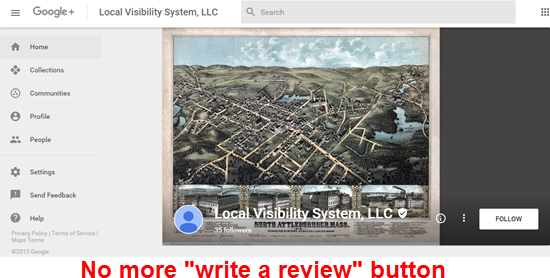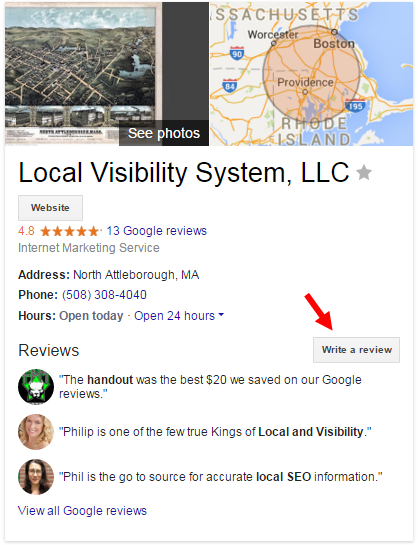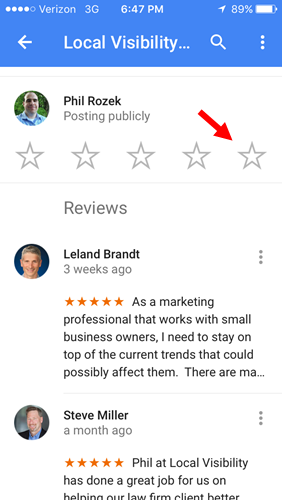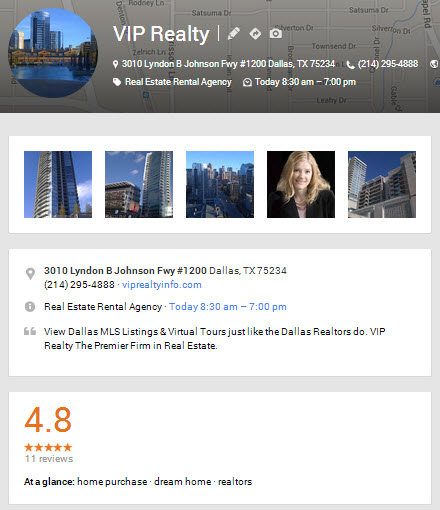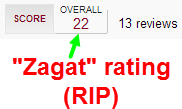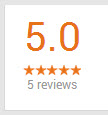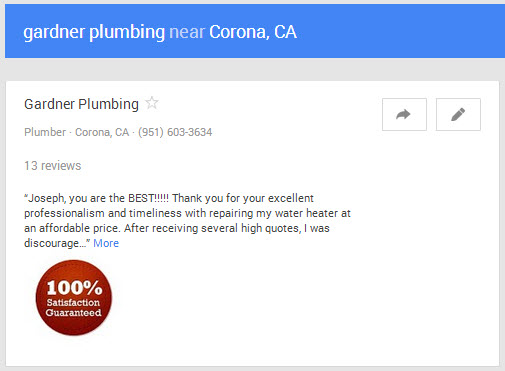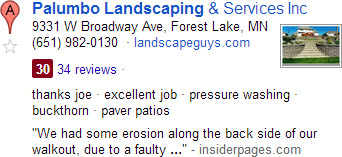Too few people realize that local SEO is mostly organic SEO plus a few other moving parts. I (and others) have found that without also doing what it takes to rank well in Google’s “10 blue links” results, you won’t grab as much visibility for your business on the local map.
Local visibility isn’t a lovechild of a Google My Business page + local citations + “optimized” site (+ spamming when convenient). Rather, it’s the result of a smart, labor-intensive organic SEO campaign with a couple of twists.
I’ve had to explain that concept enough that I thought it best just to whip up a graphic to show what I mean. Here it is:
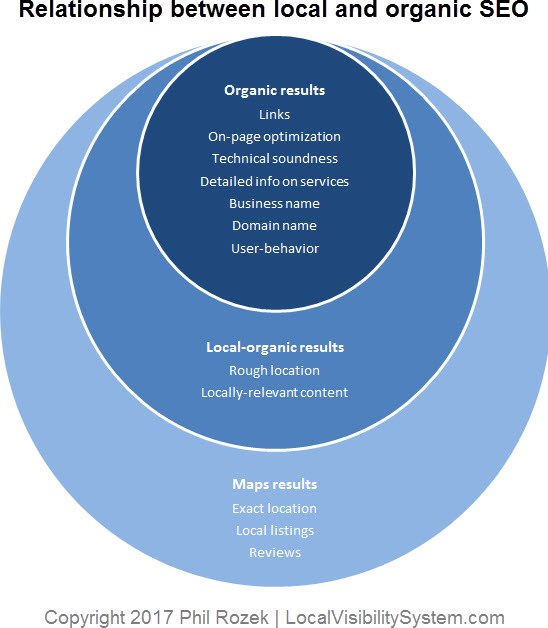
Basic explanation (very basic)
As you can probably tell, the idea I’m trying to get across is that your local rankings are hollow and fragile without that solid core of organic SEO work.
Having a website and local directory listings for a business with a keyword in its name is not a strategy. Even if that low-effort approach seems to work, the rankings likely won’t last, and if they do, you still probably won’t rank for as many search terms as you otherwise could.
Google knows where your business is located and (probably) what you offer. But how does Google know you’re any good? In a semi-competitive market, Google will usually cherry-pick. It does that, above all, by seeing how good your links are and how much good in-depth info you’ve got on your offerings.
Explanation of each “circle” and of some ranking factors
Most of the ranking factors in each circle should be clear, but a few I should explain a little. While I’m at it, I should also define each of the 3 circles.
“Organic results” circle
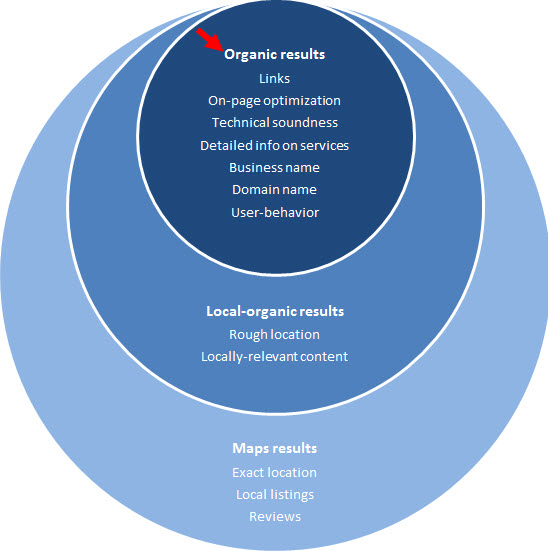
Work on the things in the dark-blue, innermost circle and you’ll rank well, whether or not you’re a “local” business.
Organic results are often non-local.
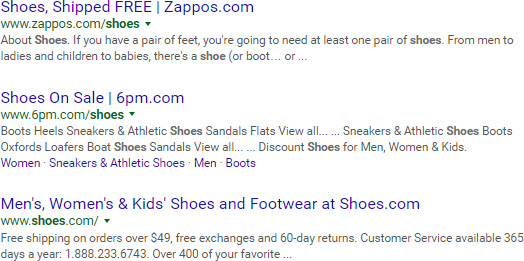
But sometimes they show local businesses, and show different local businesses based on your location.
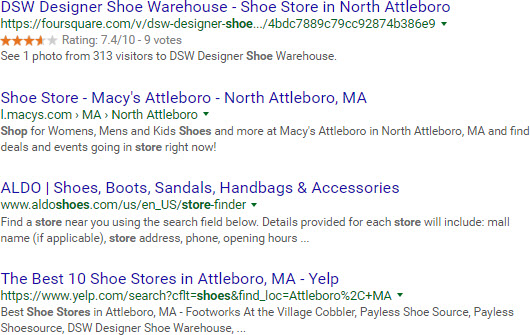
Now, a couple notes on a couple of the factors in the “Organic” circle:
Note on “Business name” factor: What your business is called has some influence on what search terms you rank for in the organic results. But, sad to say, it’s even more of a factor in how you rank on the local map.
Now, an argument could be made that I should have “Business name” in all 3 circles, because it affects your rankings everywhere. I’ve chosen not to do that. For one thing, it’s messy. Also, in my opinion you shouldn’t name your business differently just because at the moment it’s an inflated ranking factor in the Google Maps 3-pack. To me, how you name your business is part of the core strategy.
Note on “User-behavior” factor: How searchers interact with your site – both when they see it in the search results and when they’re on it – seems to matter to Google. “User-behavior” might include things like how many people click on you vs. on a competitor, what terms they typed in before clicking on you, and whether they hit the “back” button or dig deeper into your site. In my experience, that can help your organic rankings.
But there’s also local user-behavior that may matter, like what customers’ mobile location-tracking data tells Google, lookups of driving directions, and which businesses in the 3-pack attract the most clicks. Again, tough call as to which circle(s) to put “User-behavior” in, because it’s really common to all 3.
“Local-organic” results circle
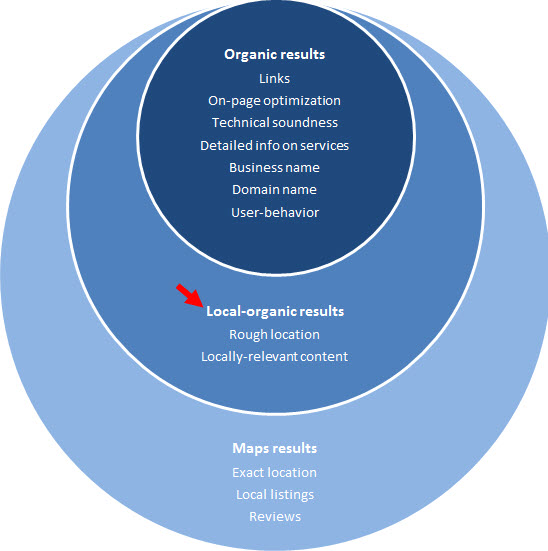
Since 2012, Google has shown local-business results in the organic search results. They’re mixed in with the other “10 blue links,” usually right below the local map. Often businesses that rank in the map also rank in the localized organic results, and vice versa.
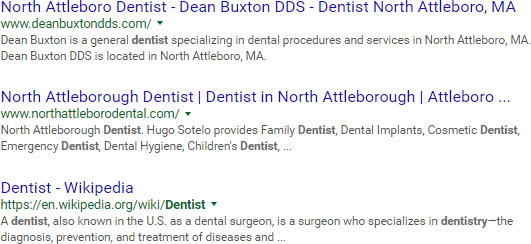
You’ll probably show up prominently in the local-organic results if you’ve got at least some of the factors from the “Organic results” circle going for you, and you happen to be a local business – with or without a Google My Business page or other local listings.
Note on “Rough location” factor: Google’s organic results aren’t as location-sensitive as the Maps results are. Even if your business isn’t located in or very near your target city, as long as it’s in the vicinity, it should be at least possible to rank in the localized organic results.
“Maps results” circle
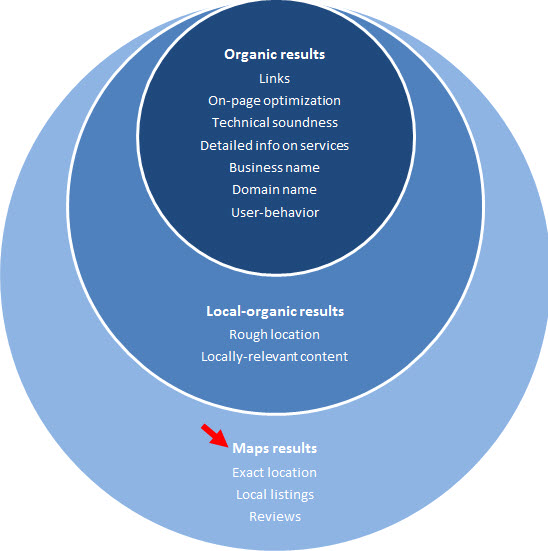
Also known as the 3-pack, or Google Places results. You’ll only appear there if you’ve got a Google My Business page and – in markets that are even a little competitive – if you’ve also got the factors from the other two circles working in your favor.
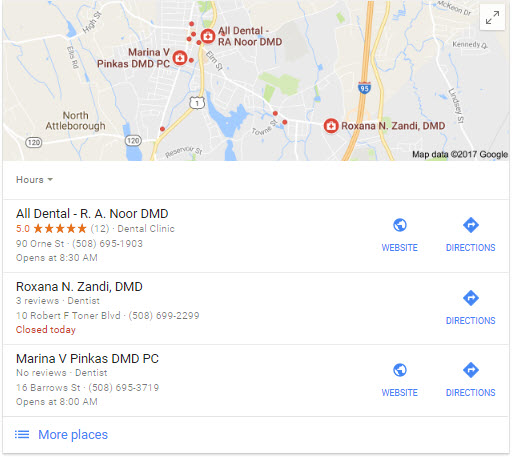
Note on “Exact location” factor: Sometimes your Maps rankings depend on whether your business is 1 mile or 1/4 mile from your customer. Location (of customer relative to business) is usually less of a factor if you’re really dialed-in on your organic SEO (that is, if you’ve got enough good links to suggest to Google that you’re a prominent or authoritative business).
—
Does my diagram make sense to you?
Is it clear what each ranking factor refers to?
Any questions or suggestions?
Leave a comment!

